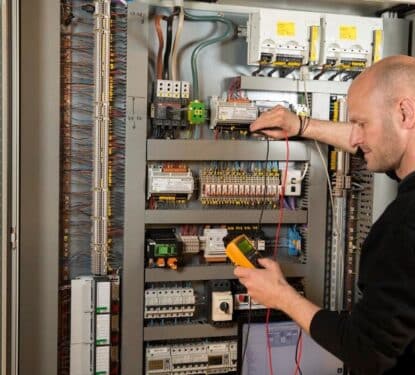Samsung is positioning itself at the core of enterprise network solution, unveiling two new IoT access points (APs), claiming industry firsts for the smallest outdoor mesh AP (ZigBee and BLE) and the first AP that combines WiFi, BLE and ZigBee. Emerging from trials in shopping malls, Samsung has opted to branch outdoors with network hardware that should enable users to build out consumer-facing IoT networks.
“The IoT AP was originally planned with shopping malls, department stores and hospitals as the primary target market, where the BLE-based location services are required. To do this, after the product development was complete, a detailed analysis on the effect of the product was carried out on-site, by visiting large shopping malls nearby,” noted Julee Lee, Product Planner at Samsung's Networks Business.

“As the first product in the industry to implement such technology, Samsung will be able to enter the Smart Building market with other illumination and air ventilation system industries that require energy saving,” she added. The launch comes alongside a turning point in the development of the lighting controls and with the ongoing transformation of BAS into the Building Internet of Things (BIoT), comprehensively covered in these respective Memoori reports.
Supporting Bluetooth and Wi-Fi is not that remarkable, but doing the same for ZigBee, the standard that is the core of IoT and BLE sets it apart from its rivals. “The product was developed with the most careful consideration of the implementation of the highest level of technology so that problems such as interference did not take place when supporting Wi-Fi, ZigBee and BLE technology. These three technologies use the same frequency range so problems such as data loss could occur when users use the three technologies simultaneously. To prevent such problems, interference control technology among Wi-Fi, ZigBee and Bluetooth 2.4G communication technologies were developed and applied”, said Deahyun Lee, Principle Engineer at Samsung’s Networks Business.
Bluetooth is nearly ubiquitous in smartphones, and for mass-market IoT offerings, it is the leading candidate for low-power devices and applications; as evinced by its uses in personal area network (PAN) devices such as wearables or beacons. WiFi is the leading high-bandwidth wireless technology, and is similarly common in smartphones and homes.
ZigBee however is less common, by orders of magnitude, but as a radio technology, it differs from the others by offering a mesh networking architecture that allows messages to hop between nodes. This allows a device to use much less power in a transmission, and therefore enjoy a longer battery life. A message can take multiple hops in a network, likely via mains-powered coordinating hubs, and travel as far as a much more high-powered transmission from something like WiFi or cellular.
Meanwhile, Bluetooth SIG is currently working on a mesh network implementation, which is likely to emerge next year and make it into commercial devices at the end of 2016 or the beginning of 2017. Similarly, rival mesh technology Thread has just begun device certification, and threatens ZigBee deployments with the potential of an online software upgrade that would convert a ZigBee device to the Thread protocol; but as it stands, ZigBee maintains a much larger install-base than Thread.
[contact-form-7 id="3204" title="memoori-newsletter"]
Samsung is also launching the industry’s smallest outdoor mesh AP, which allows wireless connection of APs, instead of using wired network cables; its primary benefit being reduction of deployment costs and the elimination of physical restrictions. With an environmental protection rating of IP67, the AP is safe from dust and debris and can be submerged in water up to one meter. At 2.8kg and 58mm thick, the product can also be easily transported and installed.
“The outdoor mesh AP is used in diverse locations in corporations and urban environments. This product can be deployed both indoors and outdoors so multiple environmental elements must be considered. For this reason, Samsung concentrated on implementing technology allowing easy deployment through a small design and easy notification of Wi-Fi status through LED lamp”, Edric Kim, Samsung Product Planner, explained.
“Moreover, to protect the product against bad weather conditions, Samsung outdoor mesh AP guarantees the IP67 certification, a rating higher than IP65, with its own waterproof and dustproof technology,” he added.
Principal Engineer, Young-Cheol Ham, addressed the test process in real environment. “This is a product developed after tests conducted in several locations within Korea, from boat race courses to embankments, to conduct various investigations on outdoor environment installations. Such experiences helped us check the competence of the product, working more accurately under any environmental conditions”.
Samsung’s outdoor mesh APs are already installed in a lake park in Korea, where it allows people to fully enjoy a speed of 1G through the wireless internet service, even outdoors. The tech giant has now launched a dozen Smart WLAN products, mainly in it’s native Korea, but also Europe and North America. Samsung will launch diverse wireless APs, which fits market needs, expanding to Asia, the Middle East and Africa.



